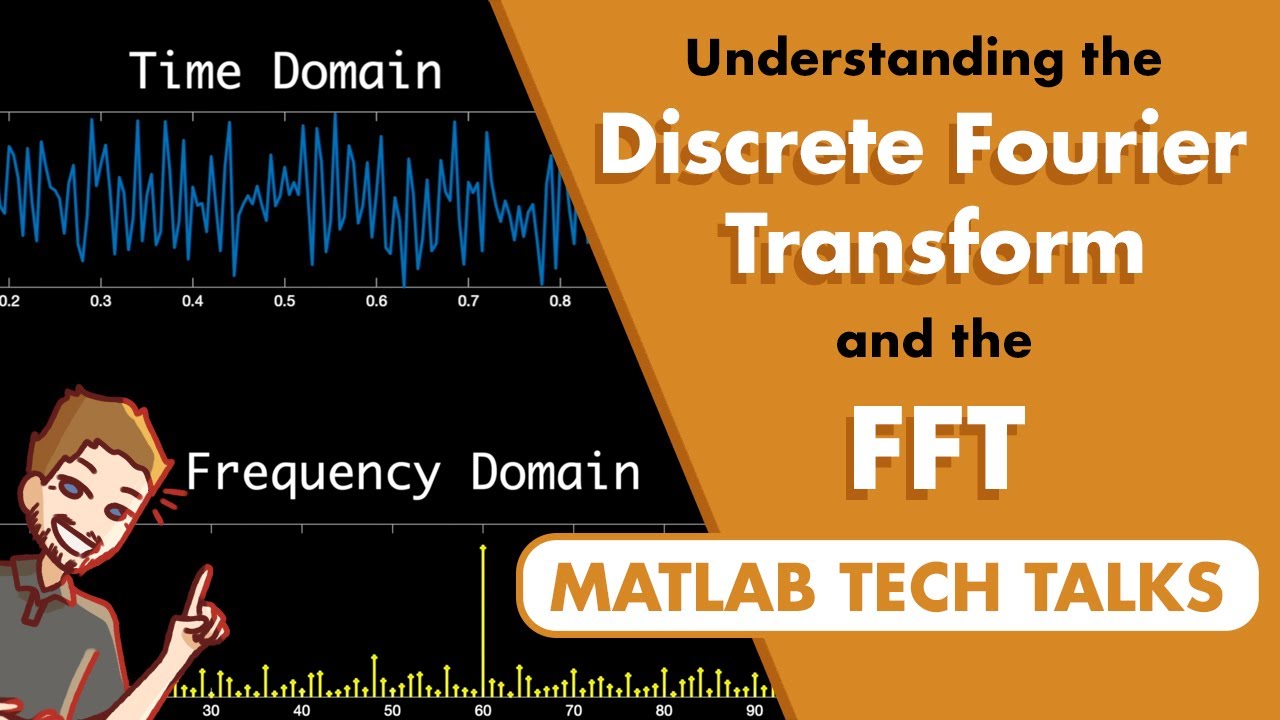Windowing explained
Summary
TLDRThis video explains windowing, a process used in signal processing to handle finite time-domain signals for frequency analysis through Fast Fourier Transform (FFT). The video highlights how real-life signals are typically non-periodic, leading to discontinuities when repeated, causing spectral leakage. Windowing mitigates this issue by smoothing out signal edges, ensuring continuous waveforms and reducing spectral leakage in the frequency domain. The presenter also compares periodic and non-periodic measurements, discussing the advantages and trade-offs of windowing, and stresses its importance in improving signal analysis accuracy.
Takeaways
- 🔍 Windowing involves taking a small subset of a large dataset for processing and analysis using a window function or tapering function.
- ⏳ Fourier transform requires an infinitely long signal in the time domain, but real signals are finite, leading to discontinuities when appended.
- 🌊 Periodic measurements are symmetric and continuous, so they don't require windowing for accurate FFT (Fast Fourier Transform) analysis.
- 📉 Real-life measurements are usually non-periodic, causing discontinuities when appended, which leads to spectral leakage in FFT analysis.
- ⚡ Spectral leakage occurs when non-periodic signals are appended, producing misleading frequency information in FFT due to discontinuities.
- 🛠 Windowing reduces discontinuities in non-periodic signals by tapering the signal at the beginning and end, minimizing spectral leakage.
- 📏 Different types of window functions exist to accommodate various signal processing needs, though they all aim to reduce discontinuities.
- 💡 Windowing helps make non-periodic signals continuous, but it can alter the signal’s amplitude and energy, resulting in a trade-off.
- 🔄 Applying windowing to a periodically captured signal can artificially introduce discontinuities, making the FFT less accurate.
- 📊 Windowing is essential for non-periodic signals to create a continuous, infinitely long waveform, reducing spectral leakage in the FFT.
Q & A
What is windowing in signal processing?
-Windowing is a process where a small subset of a large dataset is taken for processing and analysis, typically using a window function or a tapering function.
Why is windowing necessary for time signals?
-Windowing is necessary because the Fourier transform algorithm requires a signal that appears infinitely long in the time domain, which is not possible with real-world finite signals.
How does windowing help in Fourier transform analysis?
-Windowing helps by creating a signal that appears continuous in the time domain when repeated, thus allowing for Fourier transform analysis without discontinuities.
What is the difference between periodic and non-periodic measurements?
-Periodic measurements imply a symmetric and continuous signal that can be appended to create an infinitely long waveform, whereas non-periodic measurements do not guarantee continuity and symmetry.
Why do non-periodic measurements require windowing?
-Non-periodic measurements require windowing because appending them directly can result in discontinuities, leading to misleading spectrum information and spectral leakage.
What is spectral leakage and how does windowing address it?
-Spectral leakage occurs when discontinuities in a non-periodically measured signal result in a broad frequency spectrum. Windowing reduces these discontinuities, thus minimizing spectral leakage.
How does a window function reduce discontinuities in a signal?
-A window function is zero-valued outside a chosen interval, symmetric, and tapers away from the middle, reducing sharp discontinuities when the signal is appended.
What are the advantages of windowing in signal processing?
-Windowing reduces discontinuities, helps to create a continuous waveform, and minimizes spectral leakage, resulting in a more accurate FFT spectrum.
What is the disadvantage of windowing?
-The disadvantage of windowing is that it may not perfectly represent the actual signal, as it compromises amplitude and energy to some extent.
Should windowing be applied to periodically captured signals?
-Windowing should not be applied to periodically captured signals as it may introduce artificial continuity and result in spectral leakage.
What are some common types of window functions used in signal processing?
-Common types of window functions include the Rectangular, Hanning, Hamming, and Blackman windows, each serving different signal processing needs.
Outlines

Cette section est réservée aux utilisateurs payants. Améliorez votre compte pour accéder à cette section.
Améliorer maintenantMindmap

Cette section est réservée aux utilisateurs payants. Améliorez votre compte pour accéder à cette section.
Améliorer maintenantKeywords

Cette section est réservée aux utilisateurs payants. Améliorez votre compte pour accéder à cette section.
Améliorer maintenantHighlights

Cette section est réservée aux utilisateurs payants. Améliorez votre compte pour accéder à cette section.
Améliorer maintenantTranscripts

Cette section est réservée aux utilisateurs payants. Améliorez votre compte pour accéder à cette section.
Améliorer maintenantVoir Plus de Vidéos Connexes

Understanding the Discrete Fourier Transform and the FFT

DIT FFT | 8 point | Butterfly diagram

工數期末報告

Materi Transformasi Fourier - MK Matematika Radiologi

8of24 anlizing and FFT Basic signal processing theory with IIR filter design with pole zero placemen

DSP#44 problem on 8 point DFT using DIT FFT in digital signal processing || EC Academy
5.0 / 5 (0 votes)
